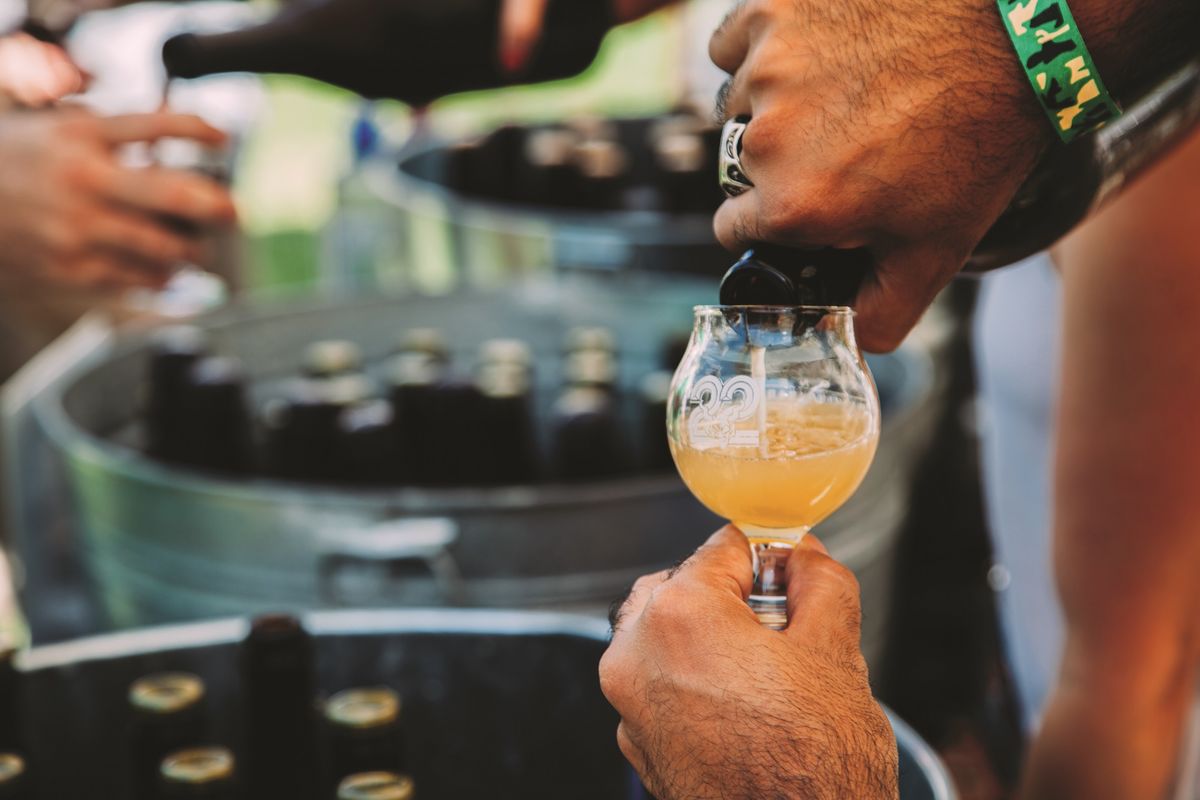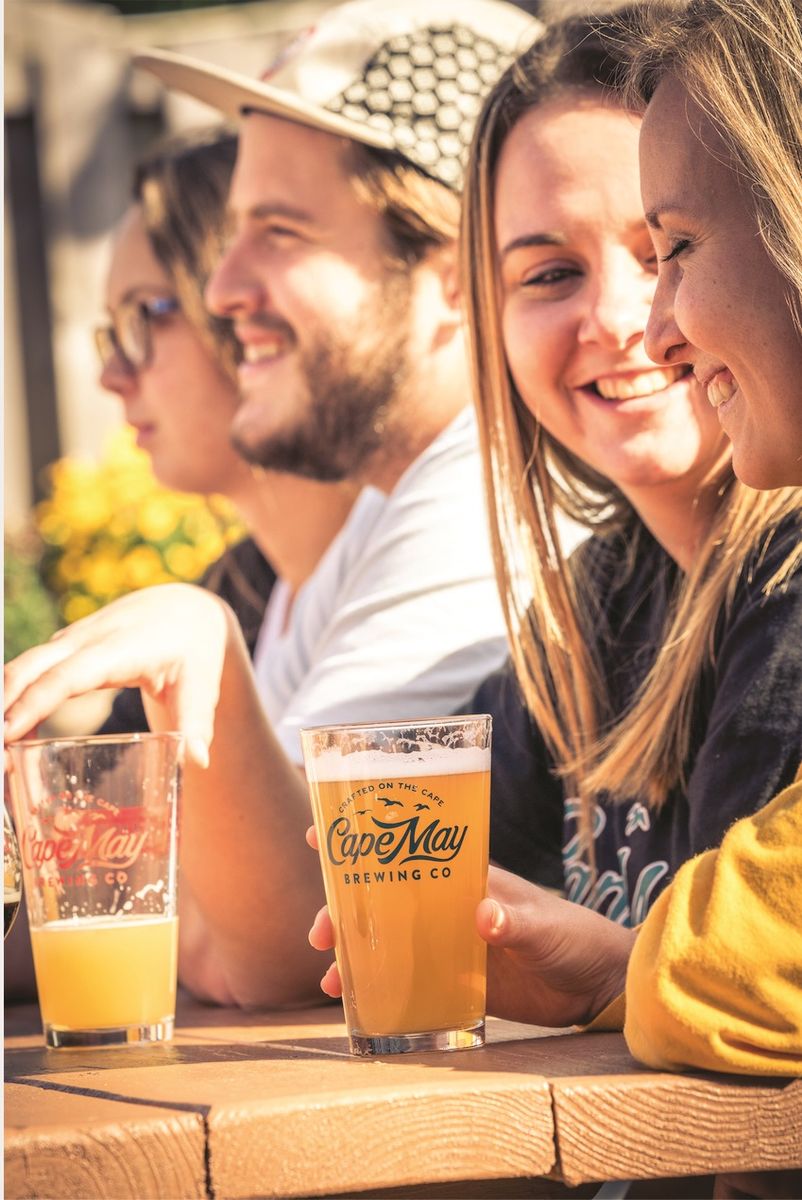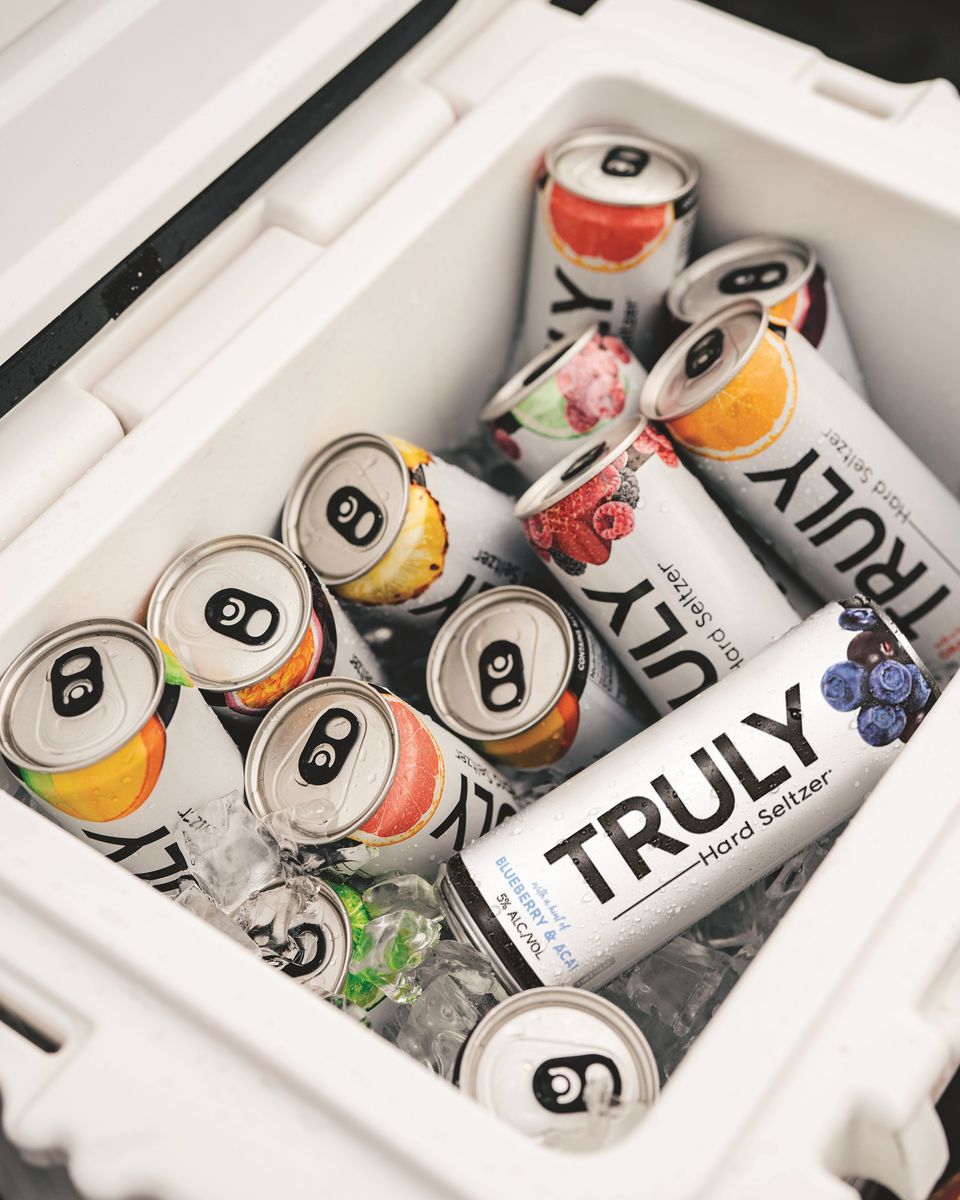Start 14-Day Trial Subscription
*No credit card required

2020 Consumer Trends
2019 was an interesting year for craft beer, seeing it stray further than ever from the ideals of beer purity laws from a bygone Bavarian era. While hops, barley, water and yeast are as relevant as ever, adjuncts have mostly lost the purist stigma they held not long ago. In fact, additives of all kinds are largely what are fueling the latest craft beer craze. Let’s pick apart the data and see what we can extrapolate about the state of beer and where it may be headed.
Total dollar sales for all beer over the last 52 weeks rung in at more than $36 billion, which is up 2.8 percent from the previous year, while total volume sales were up just 0.4 percent, pointing to continuing customer willingness to pay more money for beer, along with gradual, consistent inflation, which has contributed to higher prices among most commodities. While the days of the $8 dollar six-pack are more or less gone, there’s more to blame than simply inflation. The styles that are commanding the most attention also require a ton of raw materials – namely massive hop, fruit and grain bills, which drive prices up considerably. Often, the selling point is more to do with the quality of a special ingredient rather than the quantity – think name-brand, designer hops or Madagascar vanilla with Ceylon cinnamon sticks.
The Numbers
As always, the data we’ve examined comes from IRI Worldwide, a market research firm that tracks category-wide sales trends of beer sold in numerous retail outlets and then produces a monthly report of its findings. These findings can be used to provide real-time insight into the ever-changing beer marketplace, both Craft and Macro. They can also help industry participants adapt to the marketplace and help you make more informed choices as a consumer. To save you the spreadsheet-trawling, we’ve pieced together the most important changes in beer sales over the year 2019 and will compare them to the prior year.
Before we delve further into this year’s data, here are a few things to keep in mind – these numbers are on an international scale and may not represent individual brewery or regional sales accurately. The numbers also do not draw a hard line between beer styles within certain categories, which could mask sales trends of smaller brewers. They track sales of packaged beer only and from a few different sources, including convenience stores (think gas stations), a general “food” category (grocery stores, etc.), and a combined multi-outlet and convenience (MULC) store category (a combination of grocery, drug, Wal-Mart/Sam’s Club, dollar stores and military stores, among others). We will focus on the MULC category. While not all-encompassing, it’s a great, well-rounded resource.

Big Styles in Craft
2019 was another solid, stable year for Craft beer sales, whichsaw the segment’s dollar sales grow 2.6 percent compared to the previous year, in line with both beer’s growth as a whole and just slightly less than last year’s increase.
To the surprise of no one, IPA reigns supreme once more, with dollar sales up more than 13 percent from the previous year. This single category now comprises over 37 percent of total Craft beer sales. At around $1.6 billion of Craft’s total $4.3 billion share, it remains a force to be reckoned with, currently deriving its energy from juicy, hazy, milkshake examples of the style.
The popularity of these styles is now bona fide, well beyond a passing trend. The question is no longer “What will come next?” after milkshake brews, but “How will they evolve?” To that end, we can expect brewers to assimilate all of what is currently in vogue and follow a natural progression of creativity and technical mastery. Whereas “hazy” may have been the selling point, you can tack on “brewed with lactose” (for mouthfeel), a variety of fruits that would make Edible Arrangements jealous, and even more adventurous grain bills. The brewers making these beers aren’t just pulling ingredients out of a hat. The beers that stand the test of time within this stylistic realm will reflect a mastery of the craft, with an enhanced focus on mouthfeel and the white rabbit of flavor balance and order, one of the most difficult elements to perfect within a brew. When the stated goal is to brew a beer with all the qualities of an apple pie, you’ll ideally taste the key flavors in the same order and proportion you would in the actual baked delicacy, which takes intense attention to detail, along with trial and error. Otherwise, you’re left with a bland or overpowered mix of spices, which fails to form a cohesive whole.
While most IPAs we see require an esoteric level of skill to brew, their more readily palatable and recognizable flavor profiles are making beers more accessible to those who might otherwise be turned off at the first hint of bitterness. Every brewer’s foray into territory typically held by a wine or dessert is a chance to convert more craft drinkers. But that doesn’t mean traditional, subtle styles have once again been kicked to the curb.
Among the other styles contributing to the Craft category are golden ales, which grew nearly 14 percent compared to last year, making it the segment to see the largest growth after IPAs. It makes sense – they’re the perfect palate-cleansing antithesis to thick, enamel-stripping milkshake brews approaching double digits in ABV.
Other refined, less in-your-face styles fared similarly. Pale lagers, which saw an enormous 41.1 percent jump last year, are up another 24 percent in 2019, placing them at number eight within the top ten most popular styles. That’s rather surprising, but again, it can be viewed as a natural evolution of taste – along with the search for reprieve from heavier IPAs – without totally sacrificing the intrigue of hops.
Belgian ales saw an increase of nearly 12 percent, marking another year of double-digit increase in sales, while the omnipresent pilsner saw moderate growth at 6 percent. Again, these are generally clean, easy-drinking styles, which also make it no surprise that craft light beer grew by another 12 percent this year.
Naturally, the success of certain styles means other former champs have to ride the bench, if only for a while. Such is the case with seasonals, which have dropped 10 percent compared to last year, despite remaining the second highest-selling style. Most likely, the increase in experimental flavor combinations among IPAs and sours have stolen some of this category’s mojo.
Belgian wits and pale ales, the third- and fourth-most popular styles, respectively, are also down by 5.5 and 3.5 percent. Again, their drop is likely tied to the increase in popularity of other easy-drinking or hop-heavy styles.
Continuing last year’s trend, just about every dark beer style is selling less than the previous year, save for stouts and red ales. Again, this is to be interpreted as a result of what has currently got the market’s attention. Consumer interest is dictating what is brewed, so while drinkers are less interested in darker styles currently, brewers are also just brewing less – contributing to lower sales figures.

Demographic and Cultural Shifts
Part of this shift in interest is cultural. One of the most common sentiments you’ll hear in today’s clime is that beers are “just too sweet.” Regarding the maple glazed donut stout phase that gripped drinkers in recent memory, the people aren’t wrong on that front. This also brings to mind the ever-increasing awareness of what is and is not healthy among the average consumer. With every Whole Foods that opens, another birthday cake beer is forsaken in favor of a lager with lime. Both have flavor, but there’s about a 500-calorie difference as well as the difference between a morning run and a roaring, crippling next-day hangover.
In fact, the non-alcoholic beer segment grew by nearly 10 percent in the last year, with over $116 million in sales. Those numbers are nothing to scoff at, and have paved the way for breweries like Stratford, Connecticut’s Athletic Brewing Co., a non-alcoholic brewery that has found success tapping into niche athletic markets such as endurance races, along with being the shiny new Corvette of N/A beer next to the clunky sedan of O’Douls.
Drinkers, especially young, internet-savvy drinkers know what they want more than ever, and with more choice than ever before, simply showing up to the taps and shelves isn’t cutting it anymore. Lest we all forget, there are people of legal drinking age born after Bill Clinton’s impeachment, and these are by-and-large not salt of the earth folks who cozy up to a sixer of Michelob after a hard day at the steel mill.
Of all beer segments, the only two that saw a decline in sales this past year were top-selling Domestic Premium (macro brews) and Domestic Sub-Premium (brown paper bag brews). Though still in the top spot ahead of Imports, which saw solid growth at 6.5 percent, Domestic Premium sales dropped by 4 percent, which translates to over half a billion dollars less sold in the past year. While much of that deficit was made up for with Domestic Super Premium sales (“crafty brews”), which grew almost 14 percent, the message is clear – people are more attuned to choice and exploration before, which probably explains why you saw Budweiser Copper Lager and Harvest Reserve on shelves this year.
If you want an even more telling sign, consider that Molson Coors recently announced it would pivot away from beer towards hard seltzer and CBD beverages, changing its name to “Molson Coors Beverage Company.” One of the biggest brewing conglomerates has apparently seen the writing on the wall for total light lager domination, and is poised to capitalize on the “hybrid beverage” market, which is already well under way with the success of White Claw and Truly hard seltzer brands, both of which rank among the top-selling alcoholic beverage brands in the U.S. after seeing triple-digit growth in the past year. The top-selling seltzer, White Claw’s variety pack, grew by 300 percent, and shows no signs of experiencing a slowdown in the near future.
Hard kombucha and CBD beers, which don’t have their own categories yet, are no longer surprising to see on shelves, and further outline the “customization” option that younger drinkers crave.
These styles, which fall into the Flavored Malt Beverages category, grew by 22.5 percent this year, which was more than any other category. These numbers have real gravity and suck sales away from all other categories, again contributing to why some stalwart brands have dropped significantly, and further driving home the fact that drinkers prefer less sugar in brews – hence brut IPA. Brewers take heed! If you want to sell a stout, brew it dry!

Takeaways
There is no “black and white” in beer (unless you’re talking about IPAs, of course). More people are spending more on beer and flavored alcoholic beverages than last year, but they’re more discerning in what they choose. Less people are drinking dark and viscous beers, but more people are drinking heavy, thick IPAs that aren’t very different from a stout once digested. More people are drinking lighter beers with flavor, such as goses and other fruited sours and craft light lagers. Still more are drinking alcoholic seltzers. It’s humanity’s nature to over-analyze and try to peg each as a different beast, but at the end of the day, it’s all alcohol, and more of it is Craft alcohol than in years past. Even the non-craft brewers are brewing beer that is for all intents and purposes, Craft, save for certain moral and political lines drawn in the sand. There is more variety than ever before. If you’re a beer drinker, take heart, and also take a moment to consider how you can tailor your drinking experience in a way that maximizes your enjoyment in life, because beer is never a means to an end in itself. That may mean drinking one DIPA a night, or a few dry-hopped lagers during a weekend hang with friends or choosing styles that agree with your digestive system and don’t leave you crawling for the bathroom like a pilgrim lost in the desert.
For brewers, brew with health-conscious drinkers in mind, but don’t forsake the opposite, because for every action there is a reaction, and for every beer trend there is a total 180 within a decade. Why? It’s human nature. Exciting flavor combinations are as pertinent as ever. Currently, fruit is having its day, largely within the confines of sour beer. Bitter has taken a backseat, as has sweet. What’s that leave among the basic flavor types? Salty and savory, otherwise known as umami. Those are harder sells in beer, and at first glance seem laughable. But then again, if you told someone that seltzer water and CBD beer would be the next big thing a decade ago, you may well have been laughed out of the room.
Next Year
Whether or not the American palate has become more sensitive is still a hazy subject. What is clear is that some drinkers are willing to sacrifice raw power in exchange for efficiency or sacrifice a standard beer altogether in favor of what is healthier (though whether alcoholic kombucha, seltzer and so on is truly healthier is a matter of debate). Expect to see a cavalcade of CBD, cannabis and hemp-infused beers, along with any other “super ingredient” you can dream up. If you can imbue it with alcohol, somebody will buy it, at least for a little while until they realize it might do nothing for them. The marketable ingredients that do have noticeable positive effects will last.
In terms of beer, American drinking preferences reflect the contrast between American muscle cars and clean-burning hybrids. Some are resource-heavy to make, yet powerful, and attract those who care more for look and feel, while others are unassuming and often unimpressive at first glance but allow for greater mileage.
Without getting too philosophical, they represent different ideologies, both with their own merit, and for now, there’s room for both, but the vocal majority seems to be in favor of less gas-guzzlers and guzzling less of beers with the viscosity of gasoline. The beauty is that you never have to be one or the other. Drink what you like with no shame – just make sure you enjoy the experience.



